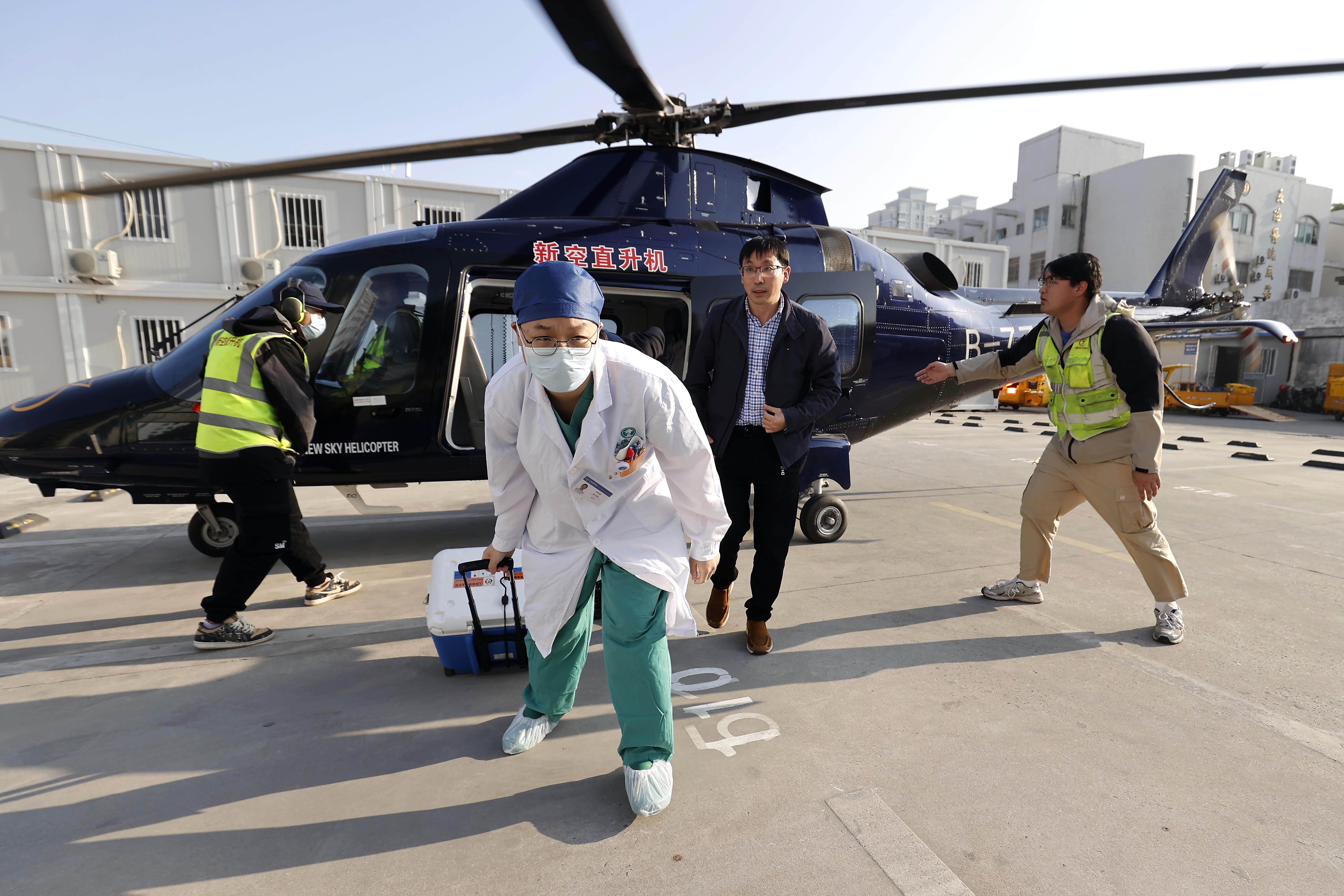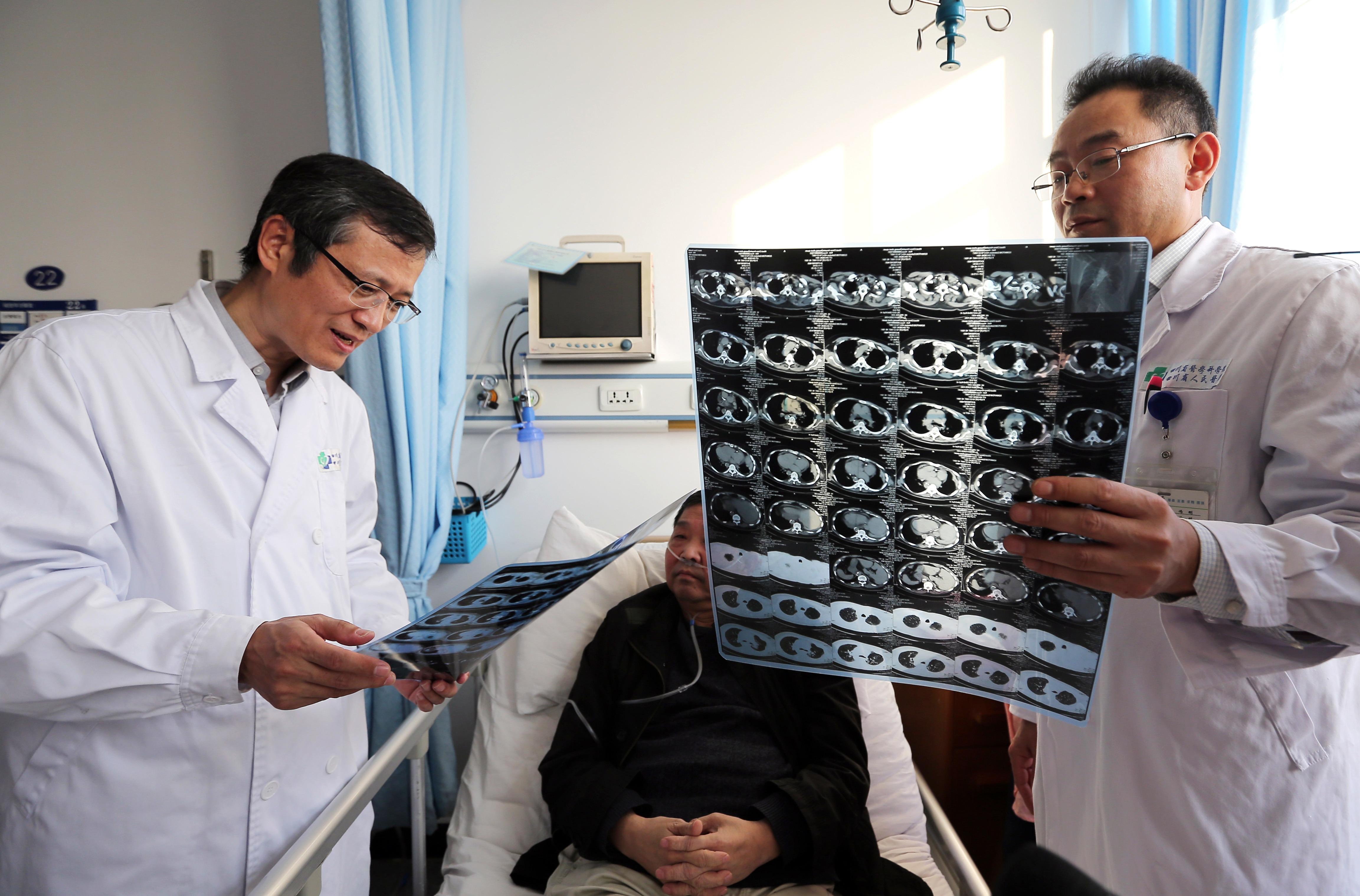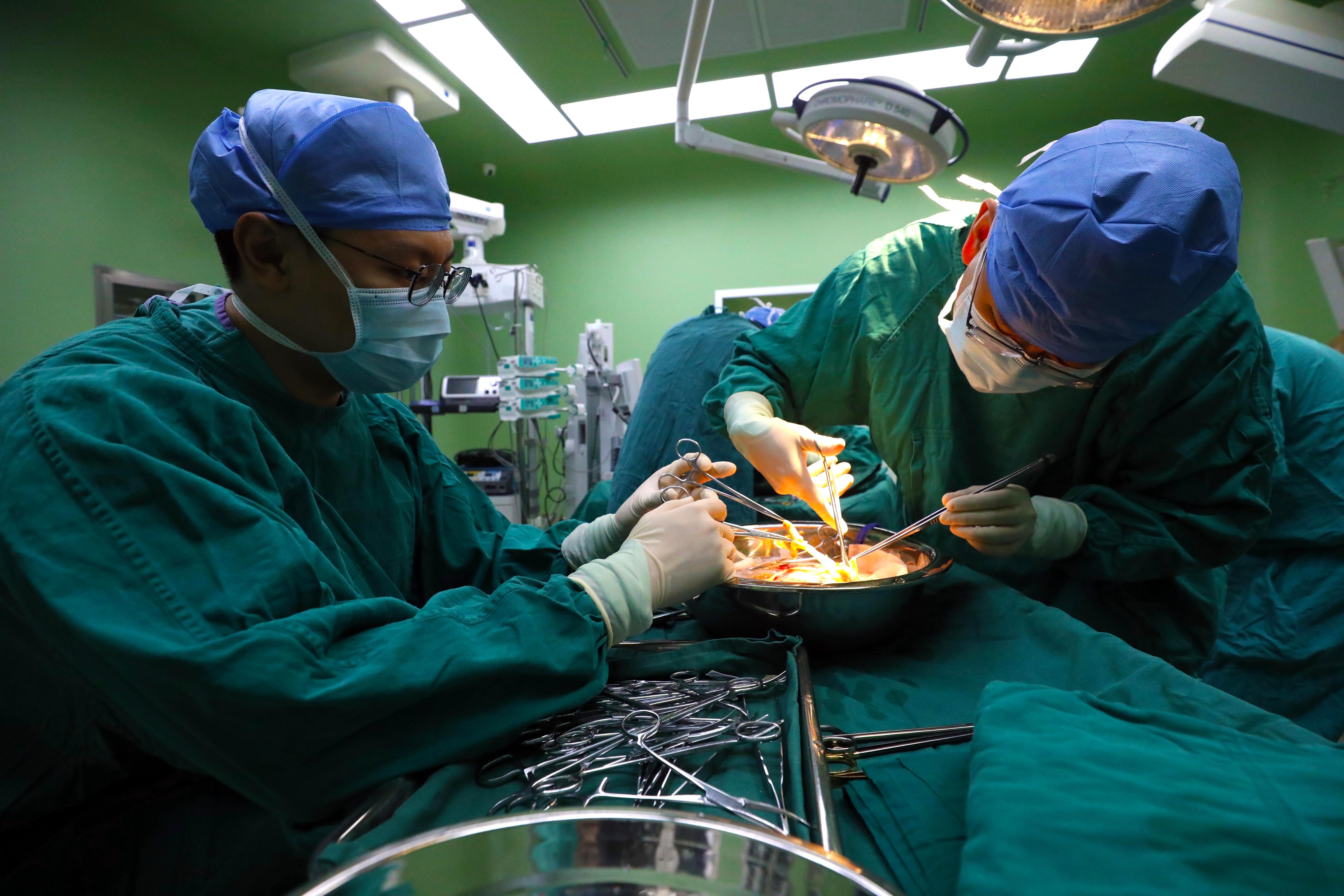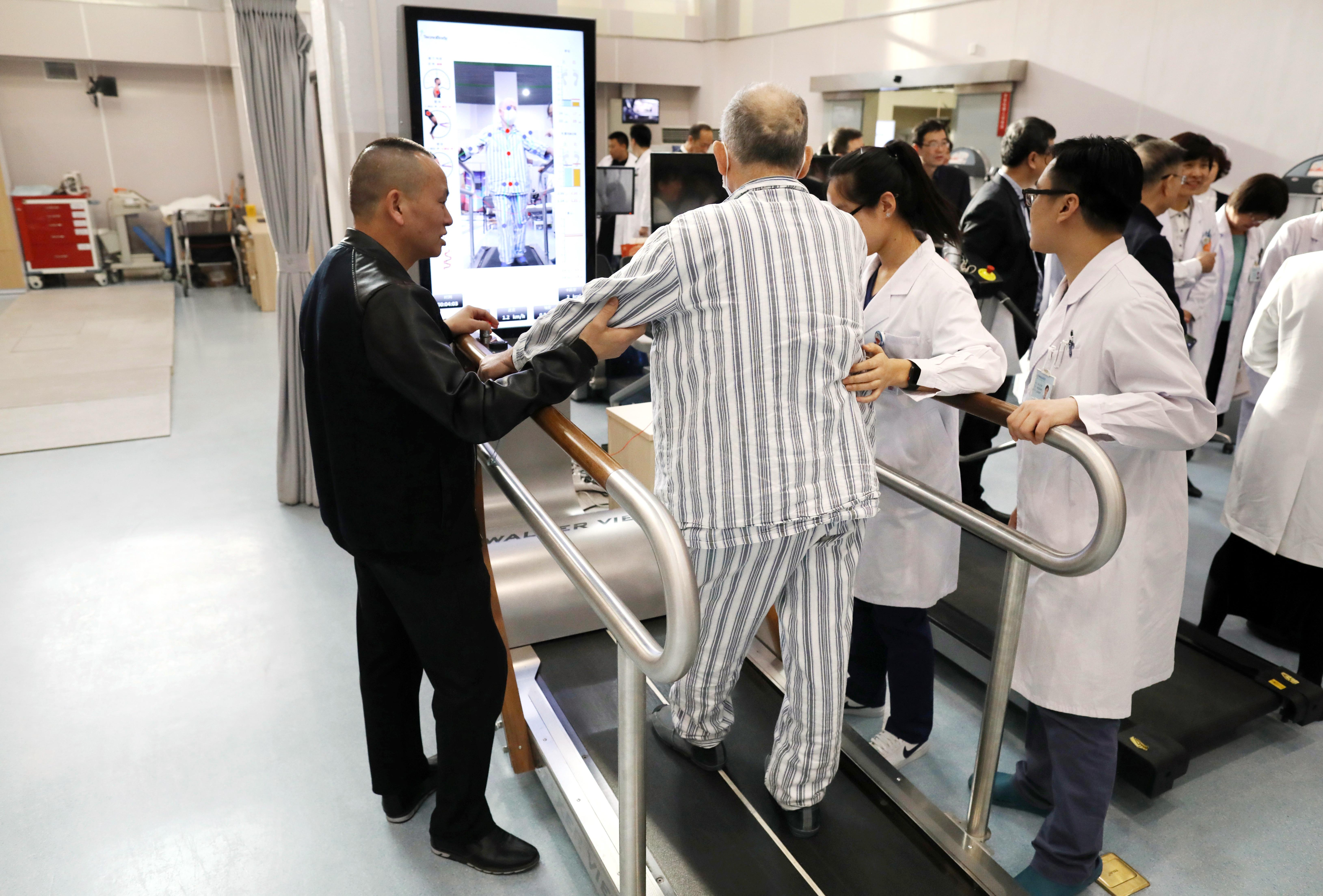Efficiency greatly improved after establishment of green channel
 A donated heart and lung arrive by helicopter at a hospital in Shanghai within the six-hour optimal time for organ preservation. (PHOTO / CHINA NEWS SERVICE)
A donated heart and lung arrive by helicopter at a hospital in Shanghai within the six-hour optimal time for organ preservation. (PHOTO / CHINA NEWS SERVICE)
Stormy weather buffeted a Sichuan Airlines Airbus A330-200 before it made an emergency landing at Yangzhou Taizhou International Airport in Jiangsu province to bring lifesaving lungs to a patient just seven hours after the organs were donated.
Flight 3U8985, operated by the carrier on July 21, was scheduled to land in Wuxi, Jiangsu, where the patient was being treated at Wuxi People's Hospital.
Doctors and the patient’s family members were anxious. We intended to send an ambulance ourselves, but there was not enough time. Fortunately, Yangzhou Taizhou International Airport had arranged one. I hope more airports can provide such help if needed.
Chen Jingyu, a lung transplant expert at Wuxi People’s Hospital who performed the transplant operation
However, the southern part of Jiangsu was battered by storms, so an alternative airport had to be found for the plane, which departed from Chengdu Shuangliu International Airport in Sichuan province.
A request to land was accepted by the Yangzhou airport, and an ambulance was arranged to transport the lungs to the Wuxi hospital some 170 kilometers away.
Chen Jingyu, one of China's top lung transplant experts and vice-president of Wuxi People's Hospital, performed the transplant operation.
He said that although the total time taken to transport the lungs exceeded the "golden six hours", this had little impact on the operation. Six hours is the optimal preservation time for such organs.
"Everyone did their best," he added.
The lungs were taken from the donor at 4 pm on July 21, before being sent straight to the airport in Chengdu.
Chen said: "Organs are allocated by the China Organ Transplant Response System, which is based on two principles. The first is a rating. Patients who need organs are rated by the Organ Procurement Organization in this system. The details required include their age, blood type, height, weight and health status.
"The second principle is proximity. An organ from Chengdu will preferably be allocated to patient in that city. If there is no appropriate patient in Chengdu, then the organ is allocated nationwide.
"This time, there was a patient in Chengdu who needed a lung transplant, but the patient's blood type didn't match. So after a nationwide search, Wuxi People's Hospital was chosen, and we sent two doctors to fetch the organ."
 Chen Jingyu (left), a top lung transplant expert, checks CT scans at Wuxi People's Hospital. (LIU HAIYUN / FOR CHINA DAILY)
Chen Jingyu (left), a top lung transplant expert, checks CT scans at Wuxi People's Hospital. (LIU HAIYUN / FOR CHINA DAILY)
Several steps are taken after a hospital is told that an organ is on the way, Chen added.
"First, we immediately tell the patient to be prepared. Second, we perform pre-surgery work, such as blood matching, and talk with a patient's family members.
"We also need to notify airlines about organ transfer plans and choose an appropriate flight. The airline then helps us get the organ through a green channel ready for transportation."
At 8:13 pm on July 21, the command center at Yangzhou Taizhou International Airport said it would accept the emergency landing. The center was also notified by the crew of Flight 3U8985 that the plane was carrying organs that needed to be transported for a transplant.
After the plane landed, two doctors carrying a live organ transportation box explained that the optimal preservation time for such organs is six hours. Three hours had already elapsed, and the doctors were hoping to receive assistance from the airport.
Li Ming, deputy manager of the Yangzhou airport, told China Media Group: "The situation was urgent. We immediately informed the airport ambulance crew. After the plane landed, an ambulance was already waiting, and the airport police cleared roads to ensure it could get to the highway as quickly as possible.
"The temperature inside the box carrying live organs has to be maintained at about 4C to 5C."
After learning about the situation, the airport activated its emergency rescue response mechanism and provided the ambulance, which transported medical personnel and the live organs over the Yangtze River, before heading directly to Wuxi People's Hospital.
"This was a great help for us and we were very touched," Chen said.
The ambulance arrived at the Wuxi hospital at 10:52 pm. Doctors eagerly awaiting it took the organs to the operating room to perform the transplant on the patient, a man more than 50 years old who had emphysema.
Chen said: "Doctors and the patient's family members were anxious. We intended to send an ambulance ourselves, but there was not enough time. Fortunately, Yangzhou Taizhou International Airport had arranged one. I hope more airports can provide such help if needed."
The operation went smoothly, the patient's condition stabilized, and he can now breathe with the new lungs.
 Doctors perform a transplant operation at China-Japan Friendship Hospital in Beijing. (ZHU XINGXIN / CHINA DAILY)
Doctors perform a transplant operation at China-Japan Friendship Hospital in Beijing. (ZHU XINGXIN / CHINA DAILY)
Progress made
The transplant is evidence of the dedicated efforts made by Chinese authorities over the past decade to make organ transfers more efficient.
Chen, as a doctor and deputy to the National People's Congress, raised a motion during the annual session of the top legislature in 2015, appealing for a green channel to be established for organ transfers.
On Oct 4 that year, Chen and fellow doctor Liu Dong collected lungs from a donor in Guangxi Zhuang autonomous region. The pair planned to take a return flight to Wuxi at 8:20 am from Guangzhou, capital of Guangdong province.
They arrived at the airport at 8:05 am. However, the duty manager refused to let them board the flight, as the check-in had closed.
"If they had helped us, we could have got on the flight," Chen posted on his Sina Weibo account.
However, he received help from another airline, and the doctors boarded a flight to Wuxi at 9:50 am.
At 12:40 pm, about nine hours after the lungs were collected, the doctors finally reached the operating room. Some four hours later, the transplant was completed and the recipient's life was saved.
 A patient exercises after undergoing an organ transplant at a hospital in Beijing. (ZHU XINGXIN / CHINA DAILY)
A patient exercises after undergoing an organ transplant at a hospital in Beijing. (ZHU XINGXIN / CHINA DAILY)
In 2015, Chen told ThePaper, a news outlet based in Shanghai, that in the first half of that year, at least 300 lung donations were made in China. However, only 60 lung transplants were carried out, as many of the donated organs could not be accepted due to long transfer time.
In view of this situation, the authorities asked Chen for his views on setting up a green channel to facilitate organ transfers. They also carried out related research. On May 6,2016, Chinese authorities set up the Green Channel of Human Organ Transport system, specifying that in the event of flight delays, departure priority will be given to flights transporting donor organs, unless there are unavoidable factors such as weather conditions. "That was epoch-making progress," Chen said.
However, time continues to be a restrictive factor in live organ transfers. Chen said there are some ways to extend the "golden time" and create more favorable conditions for organ donations and transplants.
"Organs can be put into a fluid that closely resembles those in the human body. In addition, they can be placed in a machine to simulate conditions in the human body. In such a situation, the organs can theoretically last for one to two days," he said.
"Meanwhile, a new generation of transfer boxes has been developed. An embedded chip enables doctors to monitor the location of a box and its interior temperature via smartphone. This means we don't have to call doctors accompanying the organ."


